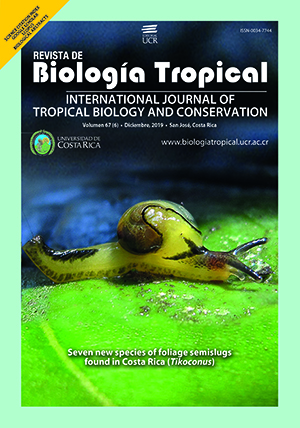Abstract
Abstract: Potential distribution of feral pigs and collared peccaries in the Laguna de Términos region, Campeche, Mexico. Introduction: The presence of feral pigs (Sus scrofa) in conjunction with anthropic processes such as the fragmentation of the habitat present in the Laguna de Términos region in the southwest of the state of Campeche, can generate changes in the patterns of distribution and permanence of native species such as collared peccaries (Pecari tajacu). Objective: The aim of this work was to model the potential distribution of feral pigs (Sus scrofa) and collared peccaries (Pecari tajacu) in the Laguna de Términos region, Campeche. Methods: Potential distribution models were generated with presence data and anthropic and bioclimatic variables through the maximum entropy algorithm (Maxent). The models of potential distribution showed spatial segregation between both species. Results: The feral pigs were positively affected by the proximity to palm oil crops (Elaeis guineensis) and seasonal rainfall; the probability of the presence of the collar peccaries was greater as the temperature and tree cover increased. The presence of feral pigs was documented in the municipalities of Escárcega, Carmen, Candelaria and Palizada, in the state of Campeche and in Balancán and Jonuta in the state of Tabasco. Based on the records and models generated, potential areas for the establishment of feral pigs are predicted, mainly in the Pantanos de Centla Biosphere Reserve in Tabasco and in some areas near the Guatemalan border. Conclusions: We consider it necessary to implement a control plan for feral pigs, not only in the region of Laguna de Términos, but also in neighboring areas in order to prevent the expansion of their distribution and the displacement of native species such as peccaries in other areas of the south of the country.
##plugins.facebook.comentarios##

This work is licensed under a Creative Commons Attribution 4.0 International License.
Copyright (c) 2019 Edwin L. Hernández-Pérez







